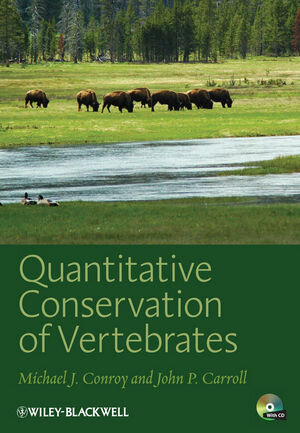
×
![Buchcover ISBN 9781444303162]()
„Overall, this would be a plausible book for an upper-divisioncourse in which students would learn, rather painlessly, thenecessary combination of observation and mathematics necessary tomake important conservation decisions.“ (CHOICE, December2009)
This book provides a hands-on introduction to the construction andapplication of models to studies of vertebrate distribution, abundance, and habitat. The book is aimed at field biologists, conservation planners, and advanced undergraduate and postgraduatestudents who are involved with planning and analyzing conservationstudies, and applying the results to conservation decisions. Thebook also acts as a bridge to more advanced and mathematicallychallenging coverage in the wider literature.
Part I provides a basic background in population and communitymodeling. It introduces statistical models, and familiarizes thereader with important concepts in the design of monitoring andresearch programs. These programs provide the essential data thatguide conservation decision making. Part II covers the principalmethods used to estimate abundance, occupancy, demographicparameters, and community parameters, including occupancy sampling, sample counts, distance sampling, and capture-mark-recapture (forboth closed and open populations). Emphasis is placed on practicalaspects of designing and implementing field studies, and the properanalysis of data. Part III introduces structured decision makingand adaptive management, in which predictive models are used toinform conservation decision makers on appropriate decisions in theface of uncertainty--with the goal of reducing uncertaintythrough monitoring and research. A detailed case study is used toillustrate each of these themes.
Numerous worked examples and accompanying electronic material(on a website - http://www. blackwellpublishing. com/conroy -and accompanying CD) provide the details of model construction andapplication, and data analysis.
Part I provides a basic background in population and communitymodeling. It introduces statistical models, and familiarizes thereader with important concepts in the design of monitoring andresearch programs. These programs provide the essential data thatguide conservation decision making. Part II covers the principalmethods used to estimate abundance, occupancy, demographicparameters, and community parameters, including occupancy sampling, sample counts, distance sampling, and capture-mark-recapture (forboth closed and open populations). Emphasis is placed on practicalaspects of designing and implementing field studies, and the properanalysis of data. Part III introduces structured decision makingand adaptive management, in which predictive models are used toinform conservation decision makers on appropriate decisions in theface of uncertainty--with the goal of reducing uncertaintythrough monitoring and research. A detailed case study is used toillustrate each of these themes.
Numerous worked examples and accompanying electronic material(on a website - http://www. blackwellpublishing. com/conroy -and accompanying CD) provide the details of model construction andapplication, and data analysis.




